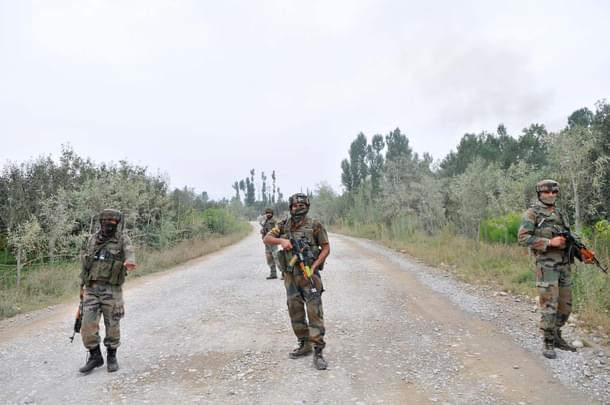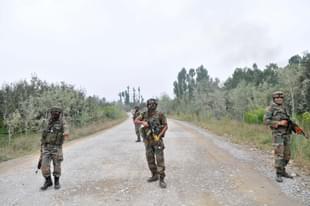Defence
2016 Surgical Strikes Anniversary: How Modi And His Ministers Fooled Pakistan Into Thinking There Would Be No Revenge For Uri Attacks
Shiv Aroor and Rahul Singh
Sep 29, 2017, 10:12 AM | Updated Sep 29, 2023, 04:48 PM IST
Save & read from anywhere!
Bookmark stories for easy access on any device or the Swarajya app.


As blanket coverage of the Uri attack took over television news and the internet on the morning of 18 September, a chill descended upon India’s Raisina Hill in Delhi. Emergency meetings were held in the most secret ‘war rooms’ of the security establishment, one of them presided over by Prime Minister Narendra Modi along with National Security Adviser Ajit Doval.
It was at this meeting that the Indian leadership secretly took two major decisions: (1) the Indian military would take the fight to the enemy this time to deliver a brutal response to the Uri attack; (2) the country’s ministers, including Modi himself, would play their parts to perpetuate and amplify India’s reputation for inaction until such a time when the response had been delivered. An elaborate, carefully crafted political masquerade would thus begin the following morning.
Meanwhile, 800 km away and high up in the Himalayas, a young Indian Army SF officer sat grimly in front of a small television in his barracks. Uri was his area. His hunting ground. Away on a special two-month mission to the Siachen Glacier with a small team of men from his unit, the calm of Major Mike Tango’s demeanour belied the fury that consumed him within. He watched familiar pictures from the Uri army camp flicker on the screen in front of him. And just as the Indian government was about to decide on an unprecedented course of action, a prescient warning rang in the Major’s mind.
"We knew the balloon had gone up. This wasn’t a small incident. There was no question of sitting silent. This was beyond breaking point," he says.

As second-in-command, or 2IC, of an elite Parachute Regiment (Special Forces), or the Para-SF as it is called, Maj Tango had spent a decade of his 13 service years in J&K. He had been part of over 20 successful anti-terror operations. And yet, the morning of 18 September had sent a knife through the officer’s heart. He could not wait to get back to the rest of his unit deployed in and around where the terrorists had struck.
Upon receiving the call from Udhampur that he had been expecting, from his unit’s Commanding Officer, or CO, Maj Tango gathered his men immediately for a quick return to the Valley. The team reached Dras that same night of 18 September — a date the men would never forget.
The next morning, as they began their journey to Srinagar, things were already in motion in Delhi. The first minister to make a statement was former Army Chief, General V K Singh, who, after the traditional condemnations, made a remarkably generous appeal in the circumstances — he said that India could not act on emotion. It would be a critical spark to the success of the masquerade, followed shortly thereafter by Defence Minister Manohar Parrikar, who declared that the sacrifice of the Uri soldiers would not go in vain. Speaking to the Army in Srinagar, Parrikar sounded a familiar note, asking the Army to take ‘firm action’, but not specifying what such action needed to be. This was standard-issue Bharat Sarkaar (Indian Government) response after a terror attack.
However, to ensure that the government’s messaging was not so measured as to rouse suspicion, junior ministers were tasked with adding some fire to the proceedings. That crucial bit was deftly served up by Manohar Parrikar’s junior minister, Subhash Bhamre, who declared that the time had come ‘to hit back’.
Two more top-level meetings took place on 19 September — one chaired by Home Minister Rajnath Singh, who had cancelled his visit to Russia, and the other by Prime Minister Modi at the PMO. Army Chief Gen Dalbir Singh, who had dashed to the Kashmir Valley just hours after the previous day’s attack, had been conveyed the government’s clear political directive. He arrived in Srinagar with the green signal that the SF had so far only ever dreamt about: permission to plan and execute a retaliatory strike with the government’s full backing.
Over the next 24 hours, the Army would draw up a devastating revenge plan, with options for the government leadership to choose from.
Excerpted from ‘India’s Most Fearless: True Stories of Modern Military Heroes’ by Shiv Aroor and Rahul Singh, Penguin Books, 2017, with the permission of the publisher.
Shiv Aroor is an editor and anchor with India Today television, with experience of over a decade covering the Indian military. Rahul Singh has covered defence and military affairs at the ‘Hindustan Times’ for over a decade, in a career spanning twenty years.





